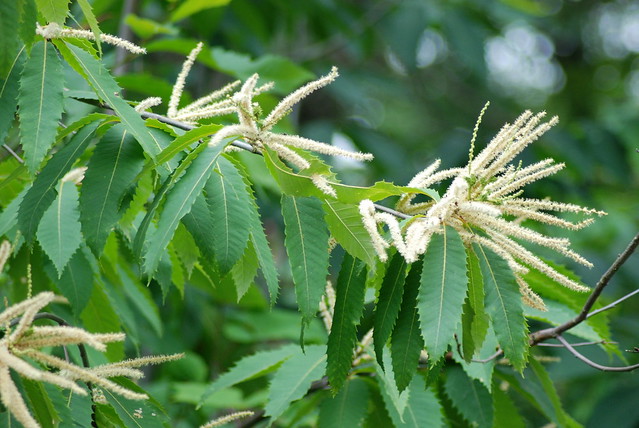Read Our Blogs
The American Chestnut Chronicle Part 2: The Blight
Shared by Shanique Wilson, as Guest Blogger.
What happened to the American Chestnut
The streaks of sunshine promised the beginnings of spring, the melting of snow and the cleansing breath of new life. For so many years, this was the perfect time to watch the Chestnut trees grow, stretching up in height and preparing for the year's abundance of seeds.
Crinkled eyes searched the nearby forest, seeking out the solitary tree that had once been a legend in his younger years. It seemed as if only yesterday when he had spent his childhood scooping up chestnuts or climbing tens of feet in the air and resting on the Chestnut's strong branches. He stood before the same tree; a frown deepened the wrinkles of his skin as he touched the trunk of the tree, his fingers grazed against the split in the wood. It could've just been his bad eyes, but he swore the split in the wood continued widening each day. It seemed it was only a matter of time before it would inevitably die.

The American Chestnut (Photo courtesy of Bob MacInnes Creative Commons License)
It was a mystery that the lone American Chestnut stayed on a life cycle: growing from a mere sapling, reaching several feet in the air before gaining a small crack here and there and finally turning yellow and dying. He didn't know what was causing the tree to behave in that manner, but he knew it wasn't right... wasn't healthy. He had seen some of its brothers and sisters grow far taller than that, and even with a faded memory like his own, he could remember the nights his parents would tell stories of an entire neighborhood being created thanks to one Chestnut similar to this. The simple idea of his grandchildren being unable to witness the greatness of the American Chestnut was dumbfounding.
They knew of the great Oak trees and the sturdy Pines, but the curriculum from their school even had forgotten that its knowledgeable words were written on paper turned from the American Chestnuts. As he touched the tree’s split bark in a parting gesture, he let slip a prayer that a cure of some sort would one day be created to save and restore not only the tree but also the piece of Americana it once represented.

American Chestnut blight (Photo courtesy of Vicki Somma Creative Commons License))
What happened
Simply from the physical stats and attributes of the American Chestnut, it seemed that the tree's only potential enemy was man cutting them all down (which would be impossible considering its importance to man and its abundance). However, around early 1900, the Chestnuts were slowly disappearing and those that were still alive started to get splits in the wood. By 1940, the majority of mature trees had been killed off. It was discovered that a disease was killing off the trees, possibly introduced from importing a Chinese Chestnut or Japanese Chestnut nursery to the United States a few years prior.
The Blight
The disease is a fungus with spores that are spread airborne. The fungus spores enter through wounds and grow in and beneath the bark, which creates a sunken canker and will eventually kill the tree from the inside out. The same type of disease can be found in different parts of Asia, but the Japanese and Chinese Chestnuts are resistant to the blight whereas the American Chestnuts are clearly not. The disease doesn't completely obliterate the Chestnuts though. What it does is hinders the Chestnut from ever being able to grow into maturity. This disease, Cryphonectria parasitica (more commonly known as the Chestnut Blight), eradicated a species of tree that had become a part of the American image.
At this time, it is still uncertain whether the current generation or future generations will get a chance to experience the legend known as the American Chestnut.
The American Chestnut Foundation is working steadfastly to find a solution to restore this once great American icon, along with several universities who are researching possibilities to revive the trees.
We will discuss this movement to restore the American Chestnut in the third and final installment in this series from Virginia State Parks.
If you have read the article and have a question, please email nancy.heltman@dcr.virginia.gov.
http://virginiachestnuts.com/














